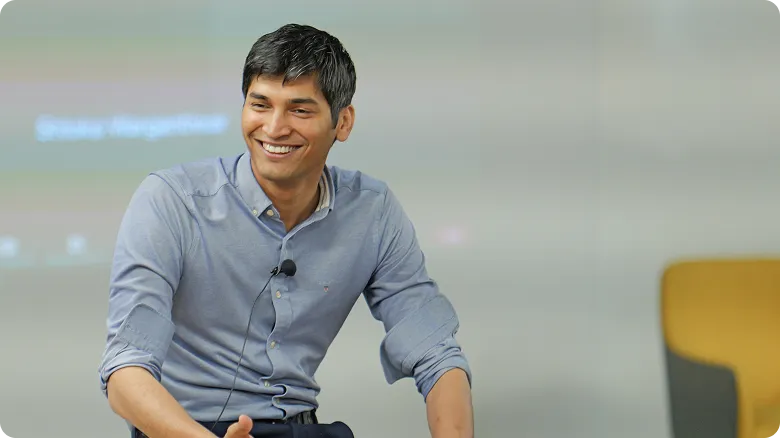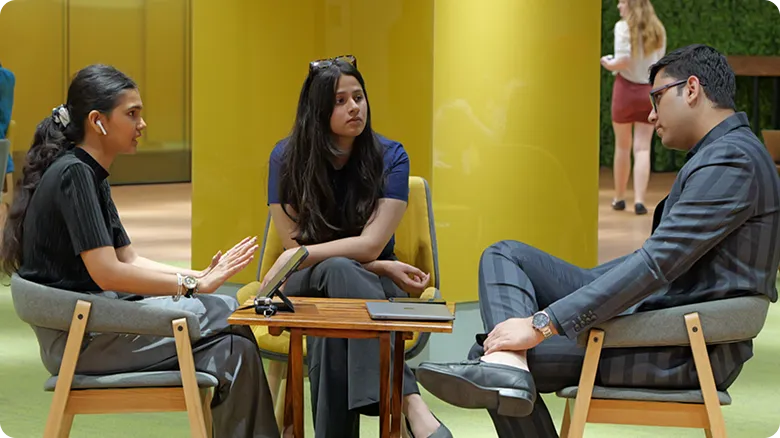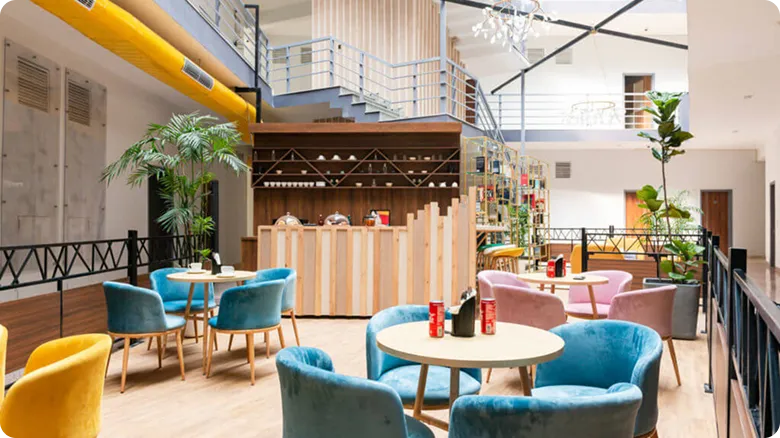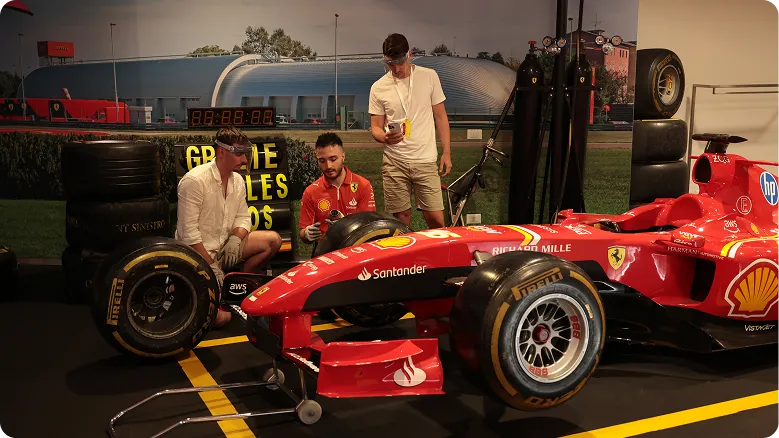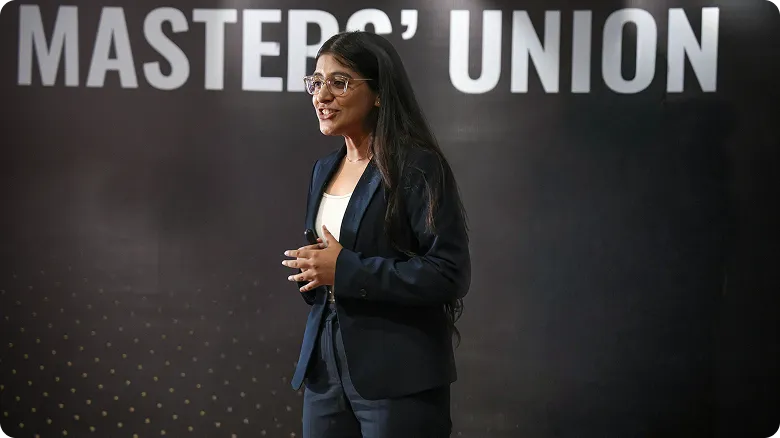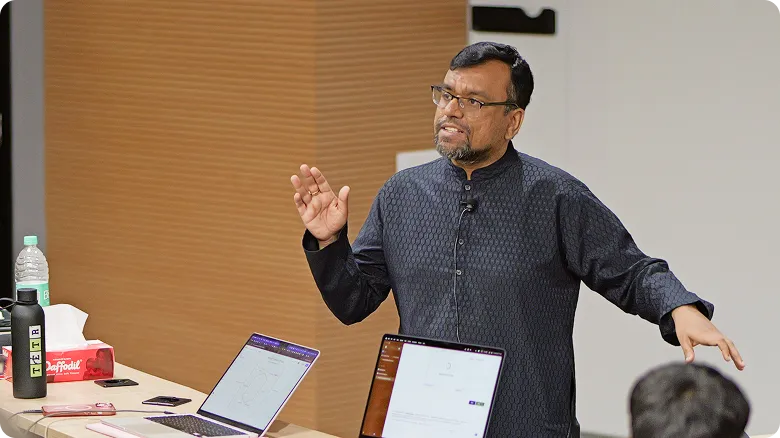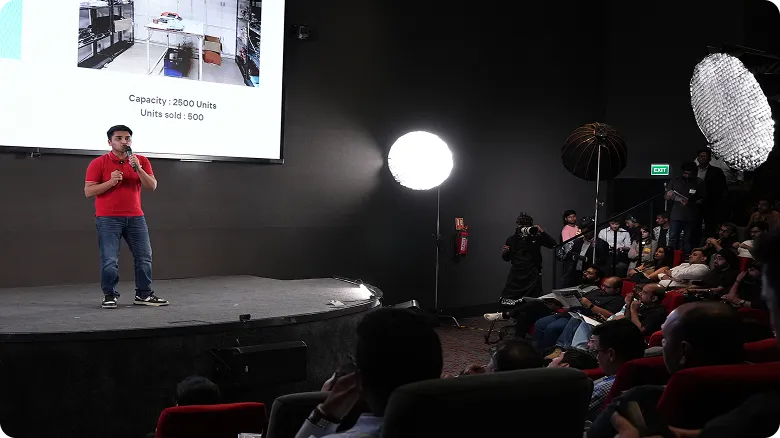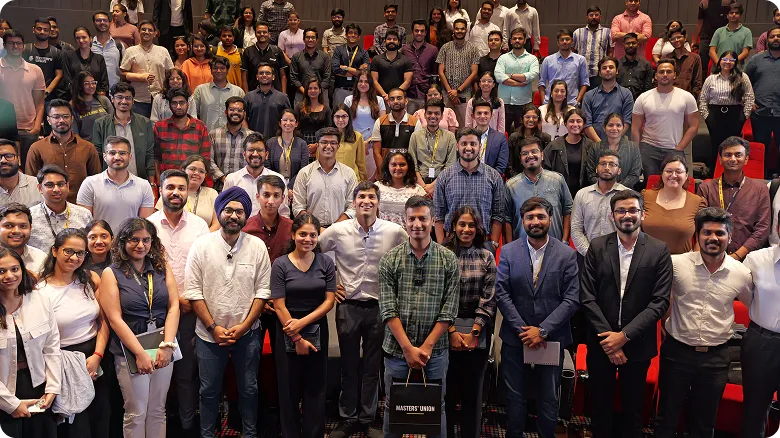Apply to the Shark Tank S5 Campus Special (Open to All Students)
Apply NowUndergraduate
Undergraduate (Global)
Postgraduate
Executive
Family Business
Careers
Innovations
Faculty
MU Ventures
Student Life
Jobs
Become a Master
events
For Companies
Blog
Business
Learn to Capture Manufacturing Marketing from Micromax Founder
April 30, 2025
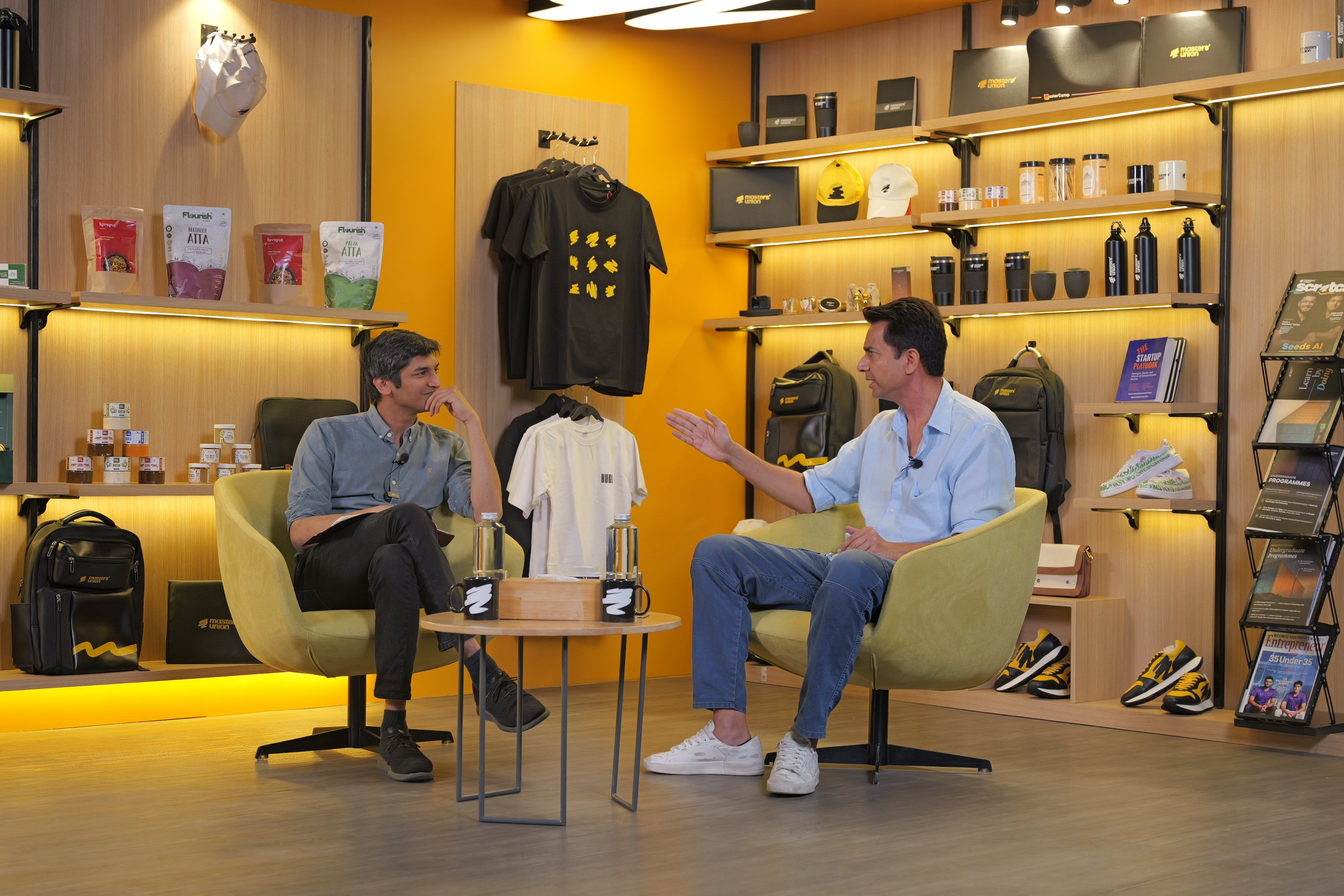
“If you really want to build something, you’ll find a way.”
These powerful words from Rahul Sharma, Micromax Founder, echoed during his fireside conversation with Pratham Mittal at Masters’ Union. For students in the audience, the discussion became more than just a business dialogue; it unfolded as a living case study in resilience, creativity, and reinvention.
Rahul Sharma’s path — from a modest SAP training institute to becoming the face of Micromax, and later scaling Bhagwati Products Limited under the BPL brand — demonstrates how sharp instincts, market insights, and the courage to pivot can transform industries.
How Rahul Sharma Became the Micromax Founder
Early Journey Before Micromax
Rahul Sharma’s professional beginnings were far removed from mobile handsets. Passionate about embedded technology, he established a training institute, convinced that embedded systems represented the future. His turning point came when Nokia’s M2M (machine-to-machine) division sought Indian partners.
While competitors rushed into handset distribution, Sharma pursued the quieter but profitable opportunity of fixed wireless terminals (FWTs). He also pitched affordable payphones to Airtel and Vodafone, scaling the business from ₹4 crore to ₹100 crore annually.
What Future Entrepreneurs Can Learn Here:
-
Identifying overlooked niches can lead to significant business opportunities
-
Strategic partnerships with industry leaders accelerate growth
The Rise of Micromax in India’s Mobile Phone Market
How Micromax Challenged Nokia and Samsung
When Micromax entered the handset business, it faced overwhelming odds. Nokia and Samsung dominated the market, and distributors dismissed the new entrant. Yet under the leadership of Micromax founder Rahul Sharma, the company steadily rose to become one of the world’s Top 10 mobile brands — a stunning achievement for an Indian firm.
This was possible because Micromax catered to local realities, focusing on affordability, durability, and battery life, rather than mimicking global trends.
Lessons on Competing with Global Giants:
-
Home-grown companies can succeed globally by focusing on local insights
-
Challenger brands thrive on agility, not sheer size
The Story Behind Micromax’s First Android Phone
Solving Rural India’s Battery Problem
The Micromax first Android phone was launched at a time when distributors resisted supporting the company. Ironically, this lack of attention provided the breathing space Micromax needed to establish itself.
Their breakthrough came from solving a practical rural issue: battery life. In regions with poor electricity access, Micromax introduced phones with 30-day standby time. This feature addressed a critical gap ignored by multinational rivals.
Insights on Product Innovation:
-
Innovation must focus on solving real-world challenges
-
Rural and semi-urban markets often provide untapped opportunities
Rahul Sharma’s Creative Marketing with “Mobile Ka Baap”
Affordable Campaigns that Made Micromax Popular
Big brands were spending millions on IPL sponsorships and TV ads. With limited resources, Rahul Sharma looked for alternatives. Inspired by a newspaper ad featuring the phrase “Entertainment ka baap”, he launched Micromax’s campaign: “Mobile ka baap”.
This low-cost but high-impact print campaign captured attention nationwide. Within months, Micromax phones sold out, proving that creativity could outshine advertising budgets.
Marketing Takeaways for Students:
-
Great campaigns don’t require deep pockets, just sharp ideas
-
Leveraging cultural trends can amplify a brand’s message
How Rahul Sharma Built a Hardware Business in India
Understanding Supply Chains and Research Partnerships
Rahul Sharma stresses that building a mobile phone involves 700–1300 components — from memory chips to charging sockets. Navigating such complexity demands deep supply chain knowledge and cost awareness.
In pursuit of innovation, Sharma cold-emailed a professor in New Orleans, flew overseas, and secured a partnership with the University of California. These collaborations contributed to Micromax’s research breakthroughs and paved the way for the Micromax first Android phone.
Learnings on Supply Chains:
-
Mastery of the value chain is crucial for hardware ventures
-
Bold global collaborations can unlock unique competitive advantages
Why Rahul Sharma Proved You Don’t Need an MBA
Learning Business by Doing, Not Just Studying
Unlike many entrepreneurs, Rahul Sharma had no MBA or corporate background. He learned marketing by working alongside agencies, experimenting with strategies, and adapting on the go.
His advice to students is clear: you don’t need perfect clarity before starting. Even with 20% clarity, decisive action will uncover the path ahead.
What Students Should Take from This:
-
Hands-on experience often outweighs classroom theory
-
Partial clarity can be enough to begin building something significant
Rahul Sharma’s Reinvention with the BPL Brand
Scaling Bhagwati Products Limited Micromax into a Manufacturing Powerhouse
After Micromax, Rahul Sharma shifted focus to manufacturing. Through Bhagwati Products Limited Micromax, he revived the iconic BPL brand and created a large-scale contract manufacturing and white-labelling business.
The results were extraordinary: revenues jumped from ₹600 crore to ₹6,000 crore within a year. Today, Bhagwati Products manufactures consumer electronics and smart devices, helping India strengthen its claim as a global manufacturing hub.
Lessons on Business Reinvention:
-
Reinventing business direction is essential for longevity
-
Controlling manufacturing ensures independence and scalability
Business Lessons Students Can Apply from Rahul Sharma Micromax Story
-
Identify Market Gaps – Micromax thrived by solving India’s battery problem
-
Leverage Local Insights – Success came from addressing rural realities
-
Market Creatively – The “Mobile ka baap” campaign proves ingenuity trumps budgets
-
Build Global Bridges – International collaborations drove innovation.
-
Reinvent Continuously – From handsets to Bhagwati Products Limited, reinvention secured growth.
End Thoughts
The entrepreneurial journey of Micromax Founder Rahul Sharma is far more than a story of building a mobile brand. It is a case study in vision, adaptability, and reinvention. From the launch of the Micromax first Android phone to scaling Bhagwati Products Limited Micromax under the BPL brand, his story demonstrates resilience and foresight.
For students, the key message is clear: success in entrepreneurship is less about perfect planning and more about courage, creativity, and the ability to pivot when necessary




